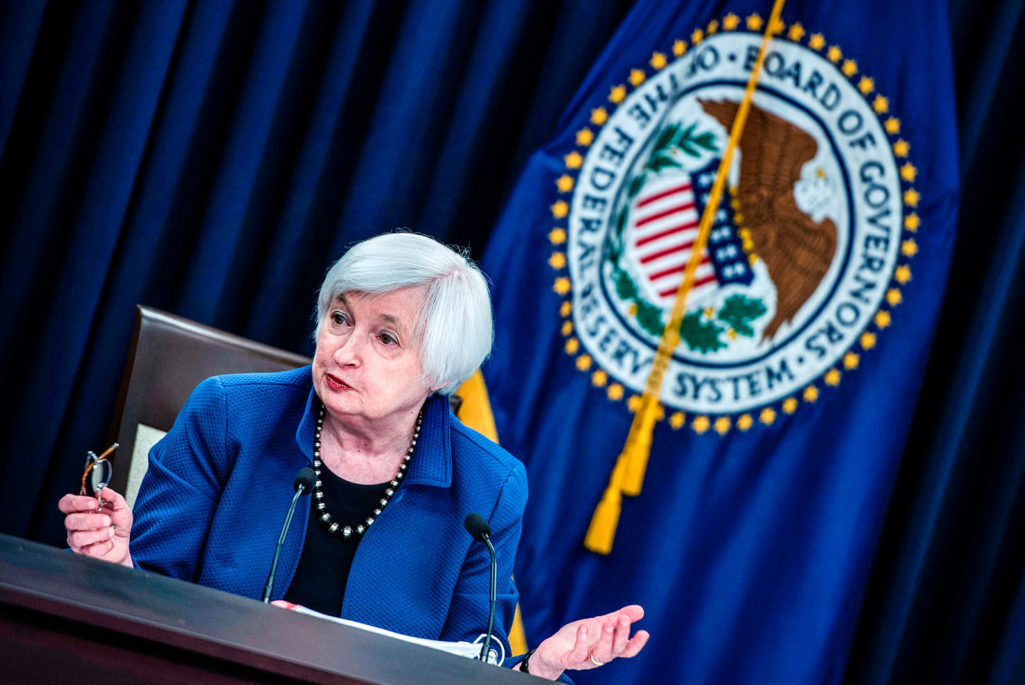Will the Impact of the U.S. Interest Rate Hike on Asia be Different This Time?

Federal Reserve Board Chairman Janet Yellen speaks during a briefing on March 15, 2017 in Washington, DC. Asia is watching the Federal Reserve carefully; fear of U.S. interest rate hikes have triggered massive sell-offs in emerging markets in the past.
Photo: Brendan Smialowski/AFP/Getty Images
Asian currencies have been under pressure recently from an expectation that the U.S. Federal Reserve (Fed) will raise interest rates this month.
[Editor’s note: The Fed subsequently did increase rates during its March meeting, taking the overnight funds rate to a target range of 0.75 to 1 percent].
The Fed has kept the target range for its federal funds rate steady at 0.5 to 0.75 percent since its last hike in December. Rates have been expected to rise since the Fed began winding down its bond purchase program, widely known as “quantitative easing” in December 2013, and after the Fed raised its federal funds rate in December 2015—the first time it had done so since the 2008 global financial crisis.
But the Fed’s interest rate moves have been much more gradual, and often delayed, reflecting various concerns about global financial market conditions, including the impact of Brexit and increased policy uncertainty. Additionally, there has been mixed economic data in the U.S.
Impact on Emerging Asian Economies
A tightening cycle in the U.S. monetary policy is typically bad news for emerging Asian economies. Rising U.S. interest rates mean higher yields for treasuries and a stronger U.S. dollar. Higher yields on U.S. assets then attract portfolio capital invested elsewhere back to the U.S.
A reversal in international capital flows, together with increased volatility due to global portfolio rebalancing, can lead to an abrupt drying-up of external funding in emerging market economies, sharp depreciation of their currencies, contraction of domestic expenditures, and reductions in both domestic asset prices and credits to the private sector.
Emerging Asian economies are not a homogeneous group, and they’ll face no shortage of risks after a rate increase.
To stop capital flight and sharp currency depreciation, emerging market economies may feel a need to raise their domestic interest rates as well. Higher interest rates would dampen domestic investment and consumption demand, while raising public sector borrowing costs and debt-service burdens.
U.S. Rate Hike Poses Risks for Asia
Fear of U.S. interest rate hikes has triggered massive sell-offs in emerging markets in the past. This time around, though, the markets remained relatively calm. The MSCI equity market index for Asia—excluding Japan—lost 523 basis points or almost 1 percent on March 3 alone, due to a sudden change in market expectations on rates with seemingly unequivocal signals from Fed officials. But these losses were recovered in less than a week. This suggests that markets viewed a rate hike as inevitable after more than two years of anticipation.
The region may not feel the urge to increase interest rates. Inflation remains under control and a sudden deterioration of financial conditions is not expected. Nevertheless, there is no shortage of risks attached to rate increases. Emerging Asian economies are not a homogeneous group, and considerable country variations in terms of impact are likely.
Countries with external imbalances or heavy reliance on external funding are likely to be most vulnerable to the effects of higher U.S. interest rates. This is why Asian countries with substantial budget and current account deficits—India and Indonesia, for example—were among the most severely hit by previous rate hikes. Governments in such economies should exercise fiscal prudence and contain budget deficits and public debts. Some Asian economies should also caution against an increase in private sector debts, as companies that borrowed in dollars during times of ample global liquidity could face debt-servicing difficulties.
Another reason we should not be complacent is the rather lackluster global industrial activity and trade amid heightened policy uncertainty around the world. A strong U.S. dollar means greater purchasing power for U.S. customers, which often helps the region weather the impact of U.S. monetary tightening by lifting its exports during episodes of capital outflows. However, global economic recovery remains tentative at best, while many Asian economies remain heavily reliant on exports and deepening value chain trades for investment and growth.
The ongoing economic slowdown in China—in part driven by structural reforms toward more sustainable and balanced long-term growth—has already affected the region’s trade and its value chain expansion.
Emerging protectionist sentiments could weigh on the region’s trade and economic prospects. Growing tensions over U.S. trade with China could have spillovers to other Asian economies, given China’s position in the region’s value chain, and could weaken their external positions.
This piece first appeared on the Asian Development Blog.


